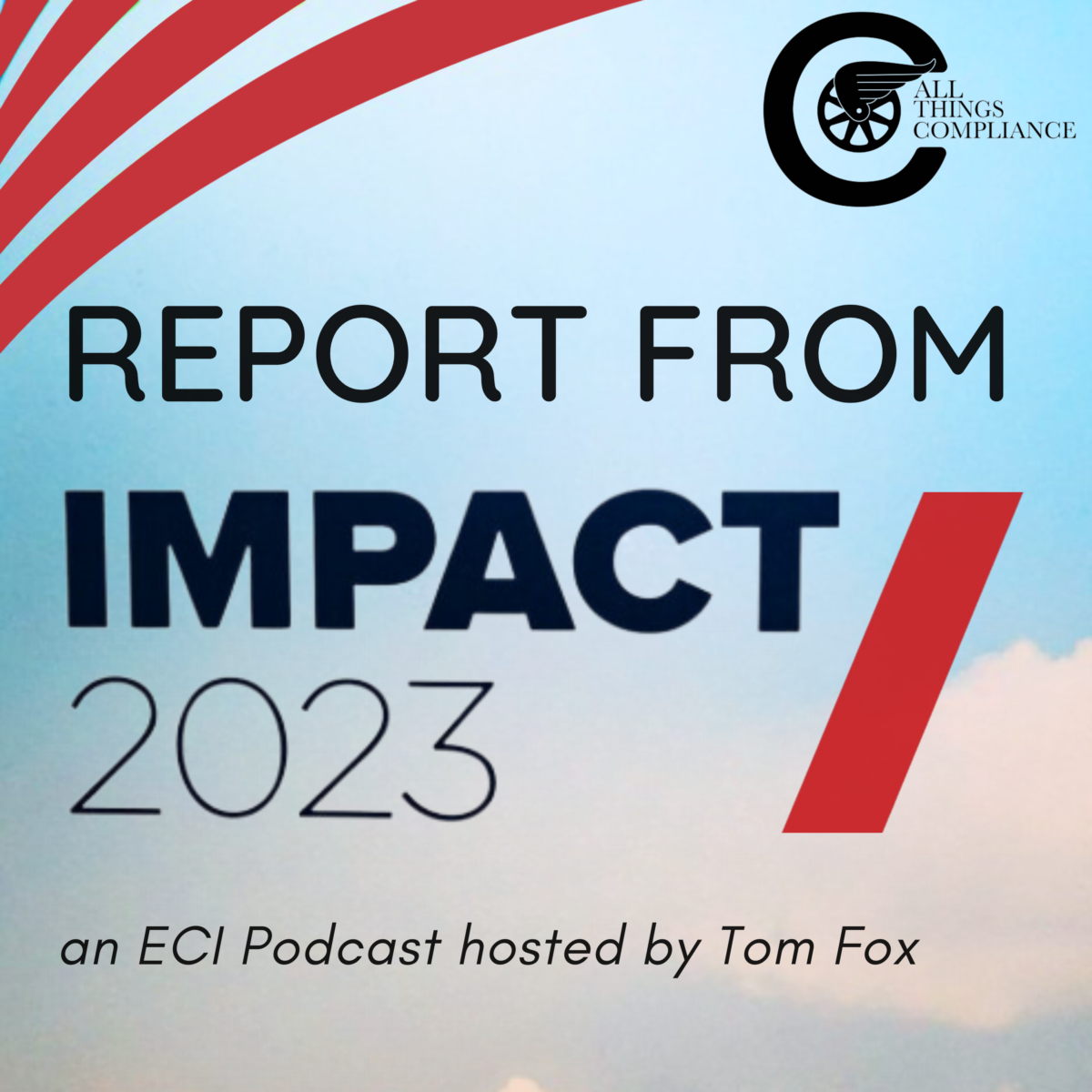Today I would like to explore the intersection thought of ethics and compliance (E&C) and environmental, social, and governance (ESG) efforts. In a recent podcast on Report from IMPACT 2023, we explored the crucial role of ethics in guiding organizations through transformational changes. With data-driven insights and practical advice, considered the challenges, opportunities, and strategies for success in this evolving landscape.
In the face of rapid technological advancements, the importance of ethics cannot be understated. The need to build safeguards to prevent potential crashes or negative consequences. Much akin to car racing, this world has the need to moving forward with technology in a safe and responsible manner. Further and just like a skilled racer, organizations must navigate the track of progress while ensuring the ethical implications of their actions are considered. Finally always remember that brakes are not on a car to slow it down but so that you can drive fast.
As power dynamics shift and new technologies emerge, the establishment of checks and balances in this arena becomes paramount. This means that organizations need to distribute power internally both wisely and ensure ethical decision-making processes are in place. By doing so, they can safeguard against potential abuses and ensure that transformative changes are guided by integrity. I often use the visual of the billboard announcing the Eyes of Dr. T J Eckleburg from The Great Gatsby as the best way to think about having a second set of eyes on your process for process validation.
In a world undergoing rapid transformation, continuous education and expanding horizons are crucial for organizations and individuals alike. For Chief Compliance Officers (CCOs) and other compliance professionals, the importance of being adaptable and open to learning cannot be overstated. Our profession is changing as fast as any other corporate function and it is coupled with the needs of our customers changing. Who are the customers of a corporate compliance program? You can start with the multiple stakeholders identified by the Business Roundtable in their seminal Statement on the Purpose of a Corporation. It can be employees, shareholders, third-parties, vendors and business partners and those who may live in localities where your organization does business. By embracing new perspectives and staying informed, CCOs, compliance professionals and corporate compliance functions can effectively navigate the challenges of a changing world.
A significant development highlighted in the podcast is the convergence of ESG and E&C. This integration presents a strategic risk and opportunity standpoint for organizations. By aligning environmental, social, and governance considerations with ethical and compliance practices, companies can create a holistic approach that benefits both their bottom line and society at large. Equally importantly is the mandate that the CCO and corporate compliance function should lead this effort. There is no other corporate function which has such a wide mandate, as set out by the regulators as the corporate compliance programs. One need only consider the 2019 Evaluation of Corporate Compliance Programs which led to the 2023 Evaluation of Corporate Compliance Programs to see that a corporate compliance function (and CCO) must have visibility literally across your entire corporate organization.
The demand for businesses to take positions on social issues is growing louder, both from employees and stakeholders. It well known within the compliance community and wider corporate world of the importance of both the CCO and compliance function not remaining silent on these matters. You may call this speaking truth to power but in the wider ESG world, businesses must recognize the power they hold to effect change and leverage it responsibly. By aligning their values with those of their workforce and society, they can build purpose-filled organizations that resonate with the younger generations.
I speak with many Human Resource (HR) and talent specialists and they all say that the acquisition and retention of talent will be the key market differentiator for business by mid-century. From Baby Boomers to through GenXers to Millennials and now Genders; the values and mindset of the current and upcoming workforce differ significantly from those of previous generations. To motivate and attract these individuals, organizations must listen to their ideas and incorporate them into the company’s values and purpose. By engaging with the younger generations and understanding their perspectives, board members can foster an environment that aligns with their aspirations. Businesses which try to enforce well-known and well-debunked tropes such as there is no such thing as climate change will be consigned to the dustbin of corporate failures.
Building transformative leadership and engaging forward-thinking board members pose challenges but are necessary for success. Just as talent acquisition and retention will be one of the most critical aspects of corporate survival, the importance of recruiting board members who understand current and future challenges and the need for an integrated approach will be equally critical. Critically this also means diversity on the Board. While seasoned experience is valuable, finding individuals who can bridge the gap between traditional values and the demands of a changing world is crucial. It also means new and different subject matter expertise will be critical. The Department of Justice (DOJ) has noted that a Board needs to have a compliance resource on it. The logical step is for a Board to have a Compliance Committee, chaired by a seasoned compliance professional.
It might even lead to a broader concept of a true risk management professional on the Board. Given the paradigm shift coming out of the Pandemic from disaster recovery to business resiliency to business as usually; a Board having the ability to have that strategic discussion and lead through oversight will be a critical element as well.
Recognizing the pivotal role that ethics and compliance play in guiding organizations through transformational changes is something that is gaining traction in the corporate world. In a world that is evolving at an unprecedented pace, it is imperative to build ethical safeguards, establish checks and balances, provide appropriate oversight and adapt to the values and mindset of the younger generations. By embracing continuous education, converging ESG and E&C efforts, and taking a stand on social issues, organizations can navigate the inflection point we find ourselves in and thrive in the future.





